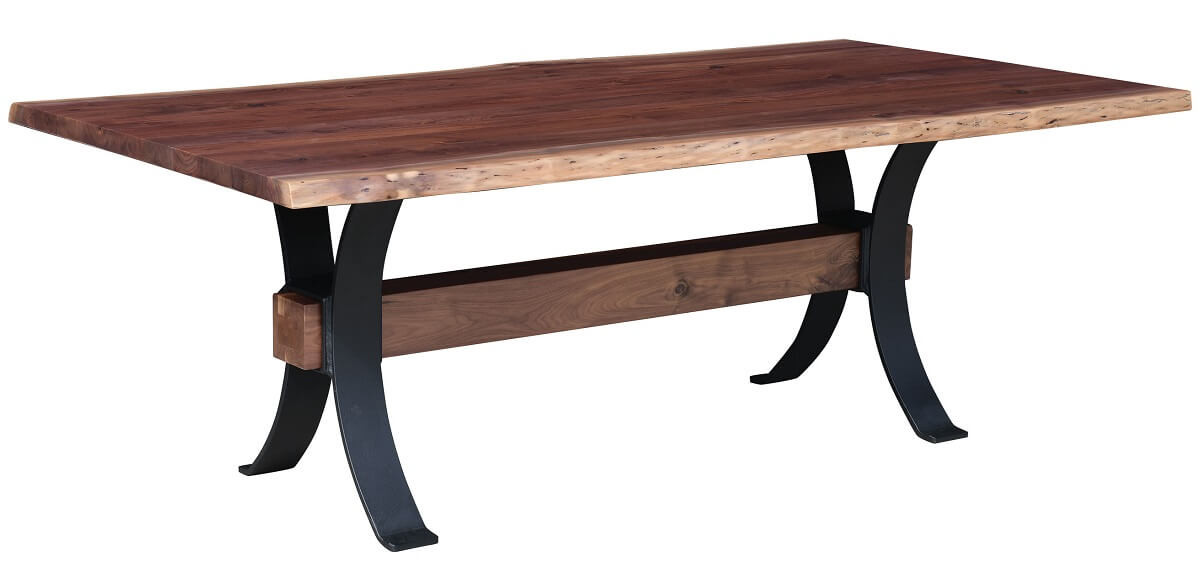From Typical to Modern: Discover the Ideal Dining-room Table Legs for Your Design
While classic styles such as cabriole and transformed legs stimulate a sense of ageless sophistication, modern designs like barrette and geometric options provide a possibility for striking aesthetic interest. As you think about these aspects, the inquiry continues to be: how can you perfectly incorporate these varied leg designs to develop an unified dining experience?
Recognizing Table Leg Styles
The selection of eating area table leg designs can dramatically affect both the appearances and functionality of the room. Each leg design adds special visual aspects and useful features, satisfying diverse design preferences and use needs. Comprehending these styles is important for selecting the right eating table that straightens with your general interior layout vision.
As an example, tapered legs provide a clean, traditional appearance that can improve an area's style, while pedestal bases supply stability and maximize legroom, making them perfect for smaller sized rooms. Hairpin legs, a hallmark of mid-century modern-day style, introduce a commercial style, allowing for a ventilated, open feel. Similarly, trestle legs stimulate rustic charm, giving robust assistance and a feeling of timelessness.
Wooden legs can bring heat and appearance, whereas metal choices usually communicate a smooth, modern vibe. Eventually, comprehending table leg designs is important for producing a natural dining area that reflects individual design while ensuring usefulness and convenience.
Traditional Table Leg Options
When selecting dining space table legs, typical options commonly personify classic elegance and craftsmanship. These styles mirror a rich heritage and a commitment to high quality, making them excellent for those that appreciate classic aesthetic appeals.
Among one of the most legendary typical leg designs is the cabriole leg, identified by its graceful curved form. This layout often features decorative carvings and is most commonly found in Queen Anne and Chippendale furniture. An additional preferred alternative is the transformed leg, which flaunts a collection of smooth, rounded shapes that offer a traditional look while maintaining stability.
Furthermore, the straight leg, while simple, supplies a basic and tough framework that can blend perfectly with a variety of tabletop styles. For those attracted to ornate outlining, claw-and-ball feet legs evoke a sense of majesty and can offer as a sensational centerpiece in any eating space.
Lastly, stand bases, although not strictly legs, provide a different typical choice that permits ample legroom and can be perfectly carved. Each of these conventional leg designs contributes to the overall atmosphere of a dining-room, weding function with visual charm.

Modern Table Leg Designs
Modern table leg styles provide a varied variety of designs that highlight tidy lines and ingenious products. These layouts typically focus on functionality while acting as striking focal points within an eating space. Minimalist aesthetics are common, with legs crafted from materials such as metal, glass, and crafted wood, which add to a contemporary and ventilated feel.
One prominent layout is the hairpin leg, defined by its slim, tapered framework that offers security without frustrating the tabletop (dining room table legs). This style is usually found in mid-century contemporary furnishings and can effortlessly match different eating table shapes. One more pattern is using geometric forms, where legs may handle unbalanced or angular forms, adding visual rate of interest and a touch of virtuosity

Blending Styles for Unique Spaces
Frequently, property owners seek to develop one-of-a-kind eating areas that reflect their personal design by mixing different design components. This strategy enables for the consolidation of diverse aesthetics, resulting in an unified yet unique environment. Pairing a rustic wood table with sleek, modern-day metal legs can create a distinctive contrast that boosts the space's overall charm.
Additionally, incorporating vintage table legs with contemporary tabletops can evoke a feeling of background while maintaining a contemporary sensibility. Such mixes not only display individual preference but likewise encourage imagination, allowing house owners to curate a space that really feels both look at these guys individual and inviting.
Shade plays an important duty in this blending procedure; selecting table legs that match or comparison with the existing color pattern can enhance visual passion. As an example, whitewashed legs can soften the daring of a dark table surface area, producing a well balanced aesthetic.
Tips for Choosing the Right Legs
Choosing the right table legs is important for accomplishing both functionality and aesthetic charm in your eating space. Begin by thinking about the total style of your room. Standard setups gain from legs that feature elaborate makings or transformed designs, while contemporary spaces may ask for streamlined, minimalist styles.
Next, evaluate the elevation and security of the legs. dining room table legs. Typical table range between 28 to 30 inches in height, so make sure the legs enhance this dimension for comfort. Furthermore, robust materials, such as hardwood or metal, can improve security and durability
Review the leg form too-- alternatives consist of right, tapered, or stand layouts. Straight legs supply a classic look, while conical legs can include a touch of elegance. Pedestal bases provide ample legroom and are perfect for smaller rooms.
Final Thought
In recap, picking the excellent dining room table legs calls for mindful factor to consider of both standard and contemporary styles. have a peek at this site By harmonizing leg design, height, and product with the general décor, a natural and inviting ambience can be accomplished.
The variety of eating room table leg designs can considerably affect both the aesthetic appeals and functionality of the room. Ultimately, recognizing table leg styles is crucial for producing a natural dining location that reflects personal design while guaranteeing usefulness and comfort.One of the most legendary conventional leg designs is the cabriole leg, characterized by its stylish bent shape. Straight legs use a classic look, while conical legs can add a touch of beauty.In recap, selecting the suitable eating room table legs needs mindful factor to consider of both typical and modern styles.